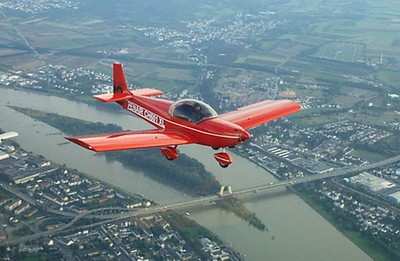Mon, Nov 20, 2006
Witnesses Say Plane Was Having Engine Trouble
 Editor's Note:
Below is the National Transportation Safety Board's preliminary
report on the November 4 inflight
breakup of an AMD CH601XL Zodiac light
sport aircraft in Northern California.
Editor's Note:
Below is the National Transportation Safety Board's preliminary
report on the November 4 inflight
breakup of an AMD CH601XL Zodiac light
sport aircraft in Northern California.
NTSB Identification: LAX07FA026
14 CFR Part 91: General Aviation
Accident occurred Saturday, November 04, 2006 in Yuba City,
CA
Aircraft: Aircraft Mfg & Dev. Co. (AMD) CH601XL SLSA,
registration: N158MD
Injuries: 2 Fatal.
This is preliminary information, subject to change, and may
contain errors. Any errors in this report will be corrected when
the final report has been completed.
On November 4, 2006, about 1139 Pacific standard time, an
Aircraft Manufacturing & Development Co., CH601XL SLSA, N158MD,
experienced an in-flight breakup while cruising approximately 8
nautical miles south of Yuba City, California. The airplane was
destroyed. The private pilot, who was a co-owner of the airplane,
and a passenger were fatally injured. Visual meteorological
conditions prevailed, and no flight plan had been filed. The flight
was performed under the provisions of 14 CFR Part 91, and it
originated from Lincoln, California, about 1129.
A ground-based witness reported hearing the airplane as it
approached his location. The witness stated that the airplane's
engine was "missing" and its power was "on and off." Seconds later
the witness heard the sound of an explosion and observed the center
section of the airplane falling straight down.
All of the airplane's structural components were located in
adjacent open fields during the National Transportation Safety
Board's on-scene investigation. The wreckage consisted of the
following components, which were separated from each other: left
wing (without aileron); right wing (with aileron); main landing
gear assembly; cockpit, engine with attached propeller blades;
aileron (left wing); and empennage. There was no evidence of oil
spray on any of the components, and there was no evidence of
fire.

The wreckage has been recovered and detailed airframe and engine
examinations are ongoing.
More News
Inversion to Launch Reentry Vehicle Demonstrator Aboard SpaceX Falcon 9 This fall, the aerospace startup Inversion is set to launch its Ray reentry demonstrator capsule aboard Spac>[...]
"We are excited to accelerate the adoption of electric aviation technology and further our journey towards a sustainable future. The agreement with magniX underscores our commitmen>[...]
"The journey to this achievement started nearly a decade ago when a freshly commissioned Gentry, driven by a fascination with new technologies and a desire to contribute significan>[...]
Aero Linx: OX5 Aviation Pioneers Each year a national reunion of OX5 Aviation Pioneers is hosted by one of the Wings in the organization. The reunions attract much attention as man>[...]
"Our driven and innovative team of military and civilian Airmen delivers combat power daily, ensuring our nation is ready today and tomorrow." Source: General Duke Richardson, AFMC>[...]
 SpaceX to Launch Inversion RAY Reentry Vehicle in Fall
SpaceX to Launch Inversion RAY Reentry Vehicle in Fall Aero-News: Quote of the Day (04.23.24)
Aero-News: Quote of the Day (04.23.24) Aero-News: Quote of the Day (04.20.24)
Aero-News: Quote of the Day (04.20.24) ANN's Daily Aero-Linx (04.20.24)
ANN's Daily Aero-Linx (04.20.24) Aero-News: Quote of the Day (04.21.24)
Aero-News: Quote of the Day (04.21.24)




